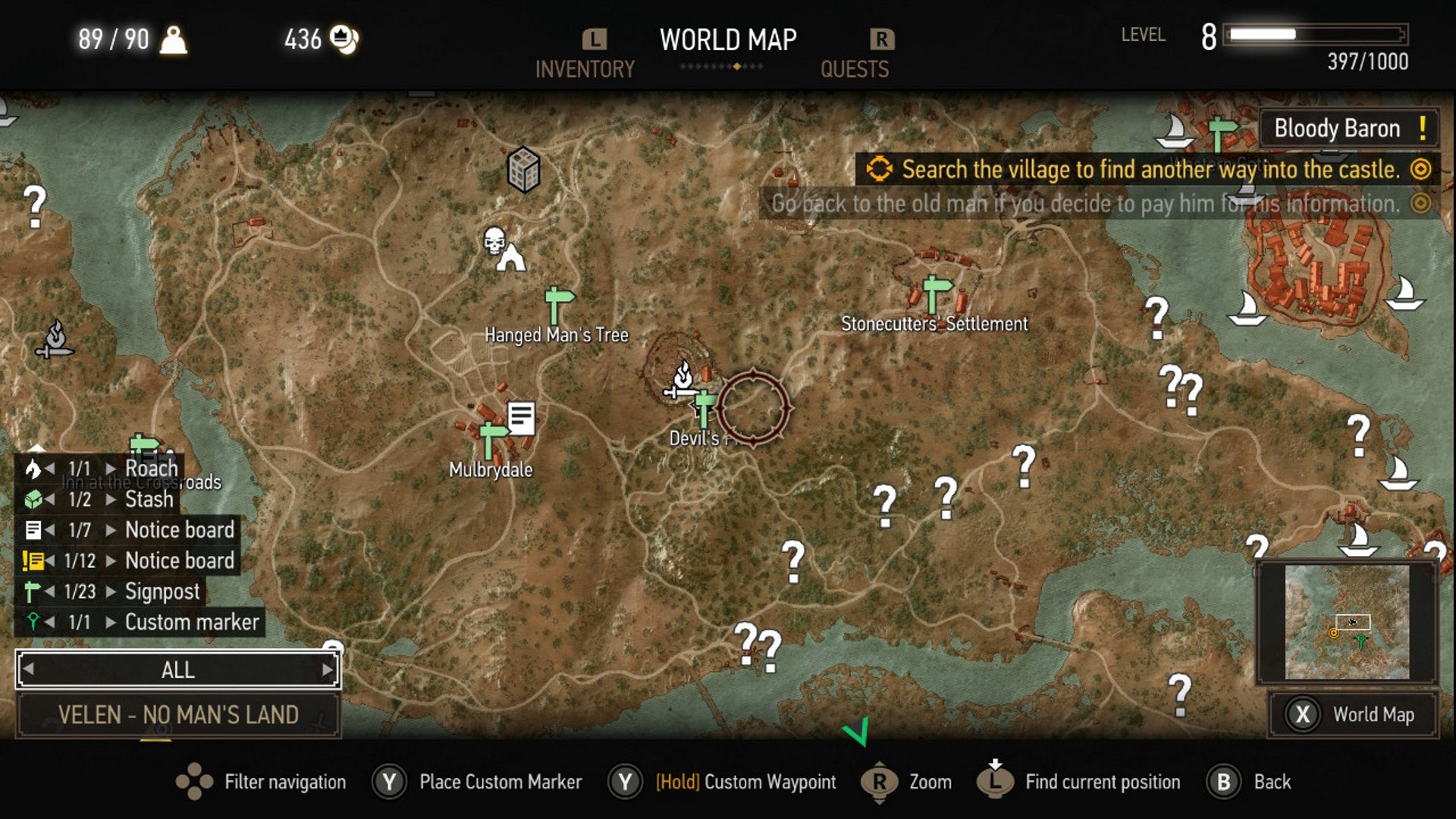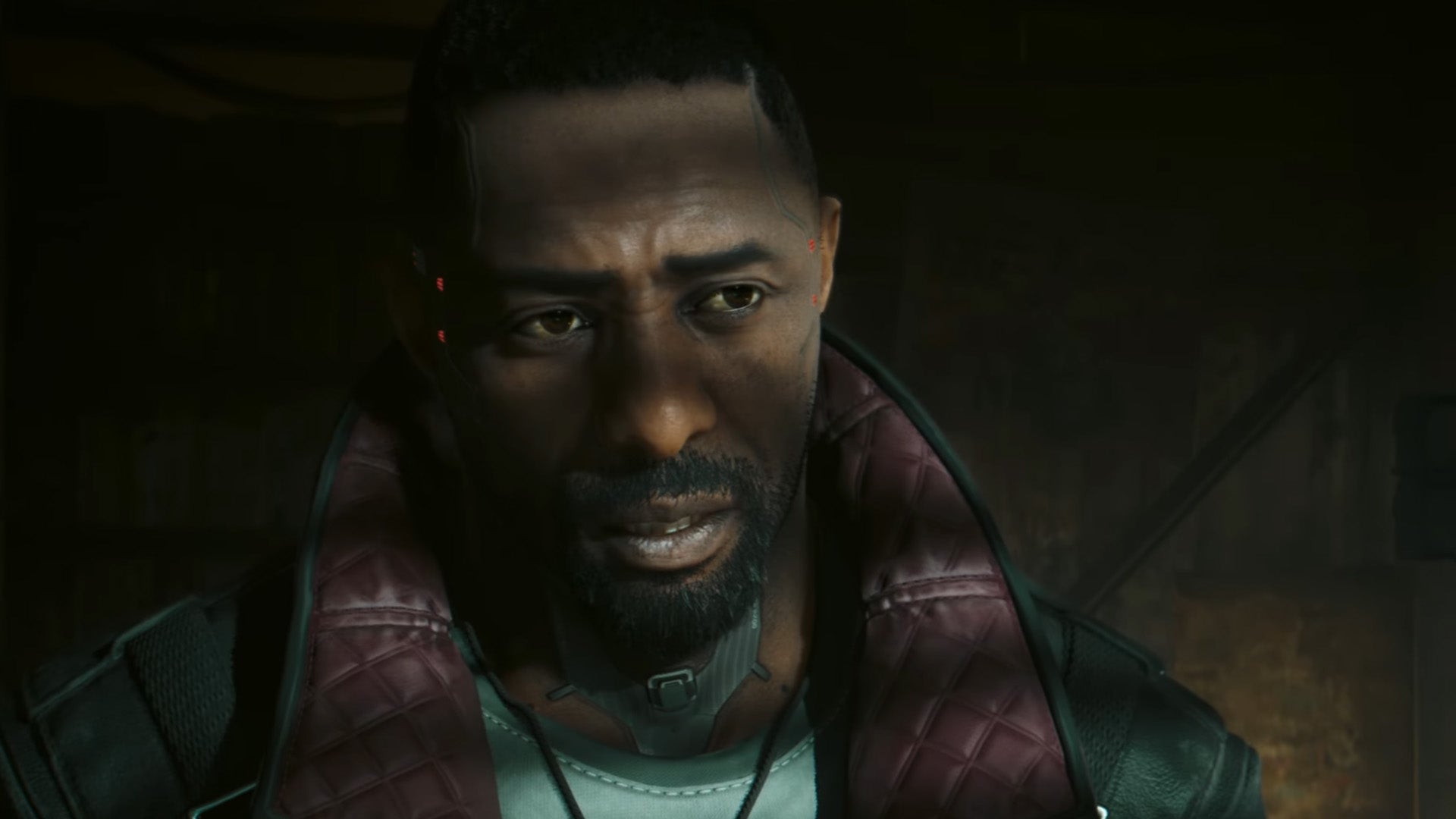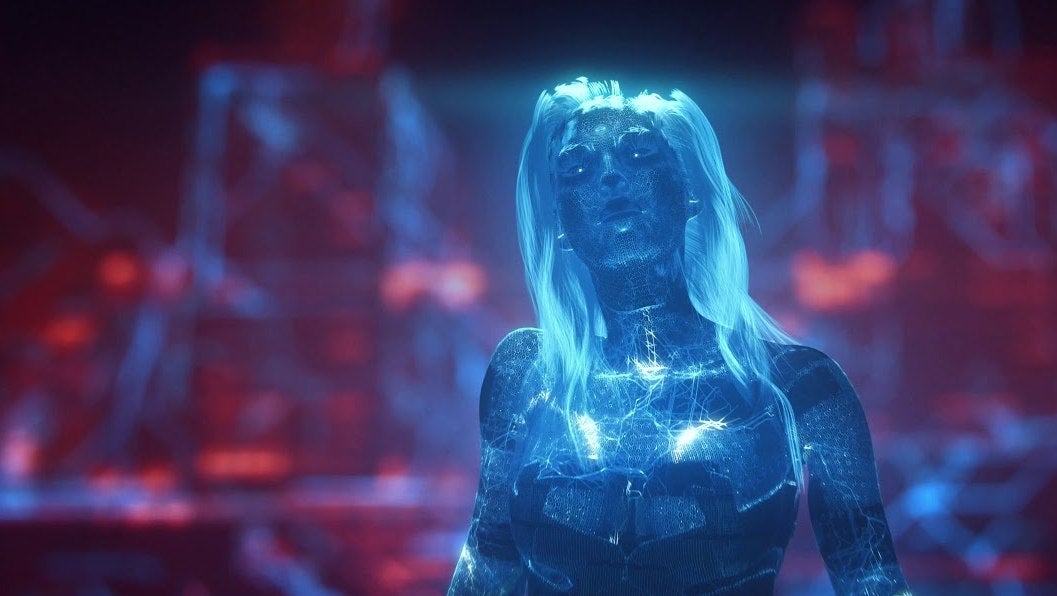Not that you’ll be missing much. The Witcher 3 is 1000 square miles of identical thatched roof cottages and fields, populated by barely sentient racists shambling about aimlessly. It’s like taking a Megabus through England. Try playing without the minimap and you’ll quickly realise that the landscape isn’t designed to be navigable without it, the only real landmarks between the identical villages and castles being the occasional road sign written in a fictional language. The organic push and pull of a perfectly designed open environment that would be perfected by Breath of the Wild is completely absent. This sense of messy disconnectedness, of being trapped in an endless landscape of repeating locales would be put to much better – albeit probably unintentional – use in the developer’s next game, Cyberpunk 2077. The sci-fi RPG is plagued by many of the same problems as CD Projekt Red’s other games; needlessly complicated and superfluous RPG mechanics, floaty combat that’s tied into a turgid hidden numbers game, sore lack of interesting or emergent ways to make it through the endless enemy encounters. For the first few hours (I’m using few in the open-world RPG sense here, so 15), you could easily get the impression that the world is the same sort of indistinguishable abyss as The Witcher 3’s. It’s overwhelming in all the same sorts of ways, a seemingly endless expanse that you couldn’t possibly begin to hold the shape of in your head to any practical degree. You’ll once again find yourself spending most of the time ignoring the $1,000,000 ray tracing to parse actually useful information from an ugly minimap, the maximalist clutter of the environments making it migraine-inducing to try to visually separate what you can interact with from what’s merely there to look pretty at E3. If this all sounds like I didn’t enjoy playing the game, it’s because I didn’t. Make no mistake, Cyberpunk 2077 is by no means a good video game. This didn’t stop me from putting 150 hours into it for no reason other than I like collecting blouses and reading other people’s private emails. With a gun to my head I couldn’t relay any of the main story or name any of the characters, other than the impossibly beautiful lesbian with the sidecut. It might not be a very good video game, but it’s a pretty decent screensaver. Most of those hours were spent with the game on mute, driving aimlessly through the streets and listening to Siouxsie Sioux. Somewhere in all those miles through all those streets, a subliminal sense of genuine familiarity with the various districts started to seep into my brain. I found myself hardly ever looking at the minimap anymore, just knowing by instinct if the area I needed to head to was generally North or South. The city is a messy patchwork of ring roads and flyovers and bizarre dead ends - the result of decades of various corporations wrestling over control of local civil engineering. It makes about as much intuitive sense to navigate as most British cities. People are somehow able to figure out how to drive around this ridiculous country without the need to consult an ordnance survey map every five minutes – and we have even worse roads than the dystopian hellscape of Night City. Spend long enough living in one awful town and you’ll eventually find a mental map of it squirrelled away in your brain somewhere, even if you didn’t want it. Cyberpunk 2077 is set in a world that isn’t meant to be navigable. It certainly isn’t designed to be walkable. It’s been built by committee to funnel traffic towards shopping districts and corporate headquarters, to plough through more diverse and interesting neighbourhoods in the name of financial progress. Yet the people living there are still trying to eke out whatever living they can in the shadows of the megacorp megaliths that are trying to eat everything around them. Because I’m such a completely normal person with normal hobbies and interests, I decided to kill the entire HUD and start roleplaying as a taxi driver, taking exploratory circuits around the entirety of the city to determine if it was remotely feasible to develop a solid sense of its shape. I stuck to the speed limit and imagined picking up someone from the Pacifica Mall and dropping them off at Lizzie’s Bar. Eventually, it clicked. The heaving network of bridges and bypasses suddenly made some form of sense, my understanding of the totality of a game’s space the clearest it’s ever been since GTA3’s Liberty City. The Witcher 3 is a product of it’s time, existing at the very tail end of arguably the worst era for open-world games – where sheer scale was the only thing people cared about, and building them in a way that actually encourages engaging with them beyond running between waypoints just wasn’t happening yet. In a lot of respects, Cyberpunk 2077 feels just as old-fashioned – but it just happens to make thematic sense. Night City doesn’t want to be explored, it wants to consume, to overwhelm everything around it. Forcing yourself against it, trying to find your way and ground yourself… that’s a feeling of victory that is unique to Cyberpunk 2077. Triumphing against a massive city’s efforts to make you feel small might not have been CD Projekt Red’s idea as a final boss, but it’s far more exhilarating than watching Geralt climb over 10,000 fences.


